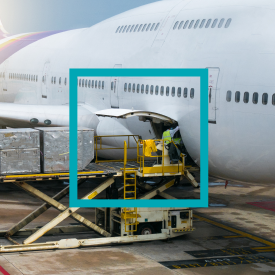- blog
- The Future of Airport Analytics TARGIT
The Future of Airport Analytics

The goal of every airport is to have passengers move from curb to gate within 20 minutes, according to the Passenger Terminal EXPO, which is the most highly regarded airport conference and exhibition in the world. Every time that goal is not met, it is a failure of proper operational planning. You can only discover what and why if you have the data.
Airports have dozens of digital systems that keep all the wheels of airport operations turning. Many of those systems produce their own dashboards and reports, but none provide a comprehensive overview of the data that is generated by passengers from curb to gate.
The Airport Industry is Screaming for BI
Airport administrators know the only way to improve the passenger experience is through data. Every system they rely on—passenger tracking, duty-free retail, security, flight status—generates valuable data in real-time. The problem is that data is reported in silos. The entire passenger experience can only be examined via individual departments. But the real value lies in connecting the dots to be able to gain insight and lessons from the complete picture.
Where do Airports Even Begin with Analytics?
Often, the first step in a BI and Analytics journey is the hardest to make. Many airport employees cannot visualize the value of bringing in one more data platform to an already stressed system. There is already such a glut of data produced that administrators assume they would have to hire an entire team of employees to sift through, analyze, and find value.
That is certainly not the case. With automatic notification agents, user-friendly dashboards, and reports and analytics delivered straight to any desktop, mobile, or tablet device, a full picture of airport operations has never been more in reach for even the least technically minded employee. An ideal case study of this scenario is Dublin Airport Authority (daa).
Start Small
daa started relatively modestly on their journey to data-driven excellence. As the airport grew, the amount of data collected exploded, and employees lacked any clear overview. daa turned to TARGIT to get more detailed insight into their car park, retail, and airport operations in order to create a more seamless passenger experience.
Soon, modest plans turned into big expectations and resulted in even bigger results. Data is collected and updated every two minutes so airport employees always have near real-time access to information.
Passenger volume is broken down by the minute so managers can create a seamless passenger experience. Managers know where any delay is and can pinpoint precisely what caused it. Access to a comprehensive overview gives operations managers direct insight into the exact routes that the airport is gaining and losing passengers. This makes it easier for DAA to learn more about their experiences and better plan for the future.
Today, that future includes an expanded analytics strategy. Airport administrators have been so happy with the operational improvements they’ve been able to make thanks to analytics, they plan to bring that insight into even more systems. For example, the airport will soon integrate small sensors into airport machinery to monitor vibrations. An increase in vibrations signals a need for maintenance, helping Dublin Airport proactively prevent a breakdown. This has far-reaching implications in improving the customer experience. This new system will be integrated within their TARGIT Decision Suite solution so users can access that data any time from within their existing dashboards.
Enterprise-wide BI
The world is getting smaller. Travelers are flying more than ever. As a result, most airports are experiencing a growth of 5 to 15 percent year over year. In order to keep up, they have to change the way they think of and handle data. If your airport is not prepared, you will miss out.
Airports need an enterprise-wide solution that integrates with every existing platform, connects every department, and fosters user adoption. It’s time to start the journey to analytics-driven excellence.
Read more about how airport analytics will break down silos, unify stakeholders, and improve operations in the guide Improve Airport Operations with Analytics.



.png)
